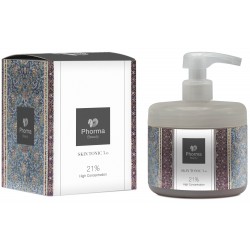Dermatology
CFJXMD5AIRFillerJALUX Gel (22%)
Based on:
- Triple Molecular Weight Hyaluronic Acid: 5%
- Hydrolyzed Elastin: 5%
- Ozone: 10%
- Vitamin C: 2%
This product provides hydrating and soothing effects on the skin, helping to fill in wrinkles while simultaneously activating the biological anti-aging process.
For Dermatologists and Aesthetic Doctors
Singular packaging of 5ml – 64mg
Class 1 Medical Device
Bibliographical Notes on Functional Plant-Based Properties
Hyaluronic Acid
Hyaluronic acid is found in the subcutaneous layer of the skin in a "coiled" configuration, which allows it to trap large amounts of water. This characteristic structure enables the skin to gain volume and elasticity, while keeping the surrounding connective tissue hydrated. In addition to providing skin fullness, hyaluronic acid interacts with various cell types, promoting cell proliferation and differentiation, which tends to slow down with age.
Moreover, hyaluronic acid with triple molecular weight can penetrate deeper than typical hyaluronic acids on the market.
Triple Molecular Weight Hyaluronic Acid
- Low molecular weight hyaluronic acid penetrates deeply into the dermis, stimulating the production of collagen and elastin—molecules that provide the skin with firmness and elasticity.
- Medium and high molecular weight hyaluronic acid acts as a moisturizer.
- The low molecular weight type penetrates the epidermis, attracting water, as it is a hygroscopic molecule capable of binding volumes of water up to 1000 times its weight.
- The higher molecular weight forms a thin film on the skin's surface, preventing water evaporation, making the skin softer and more radiant.
Ozone
Ozone is a trivalent molecule that induces an endogenous antioxidant effect, and also increases the oxygen supply to tissues through vasodilation. Its proven biological effects include:
- Antimicrobial
- Anti-inflammatory
- Anti-edema
- Repairing
- Regenerating
- Oxygenating
- Photoprotective
Vitamin C
Vitamin C is known for its antioxidant properties, protecting the skin from damage caused by UV rays and pollutants, thereby preventing cellular aging. It contributes to the normal formation of collagen, which provides structural support to the skin.
Hydrolyzed Elastin
Hydrolyzed elastin is, alongside collagen, one of the main components of connective tissue. The extracellular matrix (ECM), a structural component of connective tissues, provides support and anchorage, functions closely related to this vital protein.
Elastin consists of elastic fibers and acts as a strengthening agent for the skin and hair. It is evenly distributed on the stratum corneum, reducing water loss and increasing skin elasticity.





















